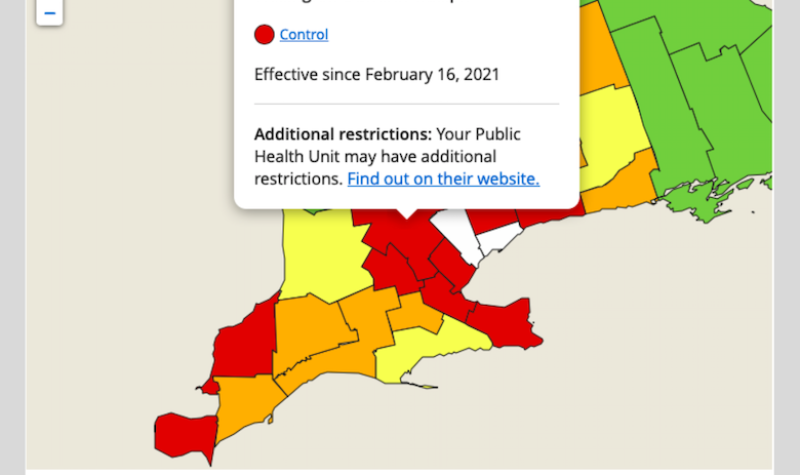A week ago, the Wellington-Dufferin-Guelph (WDG) region did not get the go-ahead to move to the orange restrict zone, and has since been in the red control zone dating back to Feb. 16.
Danny Williamson, communication specialist for WDG Public Health, said the region did have a week to ten days of very good numbers when coming out of the lockdown.
“Looking at our indicators, we are starting to trend again in the wrong direction, ultimately these decisions happen at the provincial level, [and] I think the province was waiting on gathering a bit more data before they made a move in our region,” Williamson said.
Williamson said if the region continues to trend in the wrong direction that means it is less likely to be moved to the orange, yellow or green zone, and more likely that the region goes in the other direction, one that no one wants.
When looking at Wellington-Dufferin-Guelph in terms of active cases, Guelph has had the most this week when comparing it to Wellington County individually as well as Dufferin County.
Williamson said a question that keeps coming up is, "why not treat the three regions individually then?"
He said it’s a fair question to ask, but people need to remember that the region is extremely interconnected.
“Folks who live in Wellington, live in Dufferin, live in Guelph, may work in one of those other regions, maybe travelling back and forth, [or] maybe to get their groceries somewhere else, so, while we’re basing our data on where people live, it’s also important to remember how interconnected we are,” Williamson said.
Williamson said people should be careful not to draw too many conclusions and place blame on Guelph for the region staying put in the red zone, as the region is deeply interconnected and it’s important to remember that.
He said when it comes to evaluating what zone the region gets put into there’s no magic number, it’s a bit more complicated than that, and ultimately, it is the province making these decisions and they’re looking at a holistic picture of everything.
“They’re looking at our cases per 100,000, they’re looking at our positivity rates, and they’re looking at where those cases, what they mean, are they outbreak based, [and] how many variant cases are we seeing,” Williamson said. “It’s a more complex picture than just saying, ‘what is the number that says we are red, or what is the number that says we are orange?’”
He added that it’s the choices people make in the region, and the cases, and the picture of COVID-19 that determines how open it can safely be.
Danny Williamson, communication specialist for WDG Public Health:


